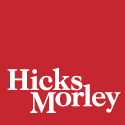FTR Now
Ontario Passes Key Healthcare Reforms to Expand LHIN Framework and Integrate Frontline Patient Service Delivery
Date: December 12, 2016
Ontario is implementing a number of key reforms to the Local Health Integration Network and health services provider system – and the way frontline patient services are delivered across the province.
On December 7, 2016, Ontario passed Bill 41, the Patients First Act, 2016, omnibus legislation intended to improve access to healthcare for patients, and coordination and continuity between services. Among other things, Bill 41 enacts key legislative reforms to integrate the healthcare services provided under the Community Care Access Centre (CCAC) model into an expanded Local Health Integration Network (LHIN) framework. In this FTR Now, we focus on how these changes could impact your organization.
Background on the Current Framework
Prior to the enactment of Bill 41, LHINs in Ontario worked with local health service providers and community members to plan, integrate and fund healthcare services on a regional basis. Simultaneously, certain frontline healthcare services were delivered by CCACs pursuant to the Community Care Access Corporations Act, 2001. Bill 41 repeals that governing legislation, effectively disbanding the CCAC model and transferring traditional CCAC healthcare services to the LHINs. In turn, LHINs will have an expanded healthcare role, greater powers and heightened accountability.
Bill 41: Overview of Key Reforms
Key amendments to the Local Health System Integration Act, 2006 (LHIN Act) are outlined below.
(Re)Defining “Health Service Provider”
Bill 41 modifies the definition of “health service provider” in section 2(2) of the LHIN Act to:
- include not-for-profit entities that operate a family health team, a nurse-practitioner-led clinic or an Aboriginal health access centre, or that provide palliative care services, including a hospice
- include a person or entity that provides primary care nursing services, maternal care or inter-professional primary care programs and services, or physiotherapy services in a clinic setting that is not otherwise a health service provider.
In practical terms, the net effect of these changes folds healthcare services currently performed by CCACs into an expanded LHINs framework. As noted above, Bill 41 also repeals the Community Care Access Corporations Act, 2001. The LHIN Act is further amended to authorize the transfer of assets, liabilities, rights and obligations of CCACs.
The Freedom of Information and Protection of Privacy Act will apply to records transferred from a CCAC to a LHIN that were not in the custody or control of the CCAC before January 1, 2007.
Mandatory Directives & Standards
With respect to LHIN accountability, Bill 41 authorizes the Minister of Health and Long-Term Care to:
- issue mandatory operational or policy directives to LHINs
- issue mandatory provincial standards for the provision of health services by LHINs and health service providers
- appoint investigators to investigate LHINs
- recommend the appointment of a LHIN “supervisor,” if it is in the public interest to do so.
Certain governance reforms modify the structure of LHIN Boards of Directors.
LHINs may:
- issue mandatory operational or policy directives to a health provider to which it provides funding
- engage in or permit operational reviews or peer reviews of a health provider’s activities
- appoint investigators to investigate certain health service providers that receive funding from the network
- appoint a health service provider supervisor to exercise the powers of the governing body of certain health service providers if it considers it in the public interest to do so.
Service accountability agreements are subject to new procedures and requirements.
Labour & Employment Issues
Bill 41 amends the LHIN Act to further authorize the “transfer” of CCAC employees to LHINs within the same geographic areas. Continuity of employment under the Employment Standards Act, 2000 and under applicable collective agreements is contemplated expressly.
Further, Bill 41 clarifies that:
- the “related employer” rule in subsection 1(4) of the Labour Relations Act, 1995 does not apply to a CCAC transfer of employees to a LHIN
- a “transfer” of CCAC employees to a LHIN is deemed to be a sale of business under the Pay Equity Act
- a “transfer” of CCAC employees to a LHIN is not a health services integration for the purposes of section 9 of the Public Sector Labour Relations Transition Act, 1997
- Employees transferred under an order become employees of the LHIN affected by the order.
Excellent Care For All Act, 2010
It is worth noting that Bill 41 amends the Excellent Care for All Act, 2010 in respect of:
- personal health information and its collection, use and disclosure by the Ontario Health Quality Council
- LHIN oversight by the Patient Ombudsman, who has authority over home and patient care complaints and other prescribed services provided by LHINs.
Concluding Remarks & Next Steps
Ontario’s healthcare sector continues to be a major focus of legislative reform. Healthcare organizations need to prepare for change and compliance to avoid liability issues – such as the significant new fines relating to improper patient health information disclosure established in the pending new Quality of Care Information Protection Act, 2016, which was recently enacted under Bill 119.
As outlined above, the Bill 41 reforms are equally significant and will have a major impact on the delivery of frontline healthcare services. Should your healthcare organization need further guidance regarding Bill 41, our healthcare team is well-positioned to assist. Our expertise in healthcare matters ranges from healthcare sector mergers and amalgamations, to healthcare program transfers, privacy compliance and data breach response – and more. Do not hesitate to contact Sarah Eves, Craig Rix or any member of our Hicks Morley Healthcare practice group.
The article in this Client Update provide general information and should not be relied on as legal advice or opinion. This publication is copyrighted by Hicks Morley Hamilton Stewart Storie LLP and may not be photocopied or reproduced in any form, in whole or in part, without the express permission of Hicks Morley Hamilton Stewart Storie LLP. ©
